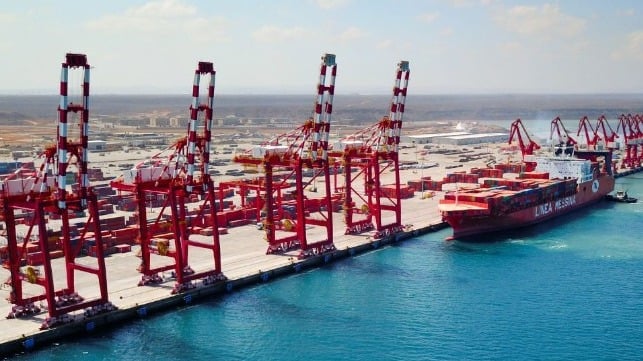How China is Expanding its Reach in the Indian Ocean

The highly publicized blockage of the Suez Canal has brought the importance of maritime trade to the public consciousness. As the history was unfolding at the Suez Canal, sea-blindness was brought to the fore as masses wondered why an obscure “boat” could wreak havoc on commerce. As the naval strategist Alfred Thayer Mahan illustrated in his famous book "The influence of sea power upon history," the development of world trade and the rise and fall of empires depend in large part on the immense role of sea power.
A modern-day case study is China’s Maritime Silk Road initiative. Is it a quest for Chinese sea power?
It’s undeniable that China is deliberate in its creation of an extensive network of cooperating foreign ports to secure its shipping interests. A similar strategy was employed by the British Empire, when colonies were outposts of its sea power in the imperial era. In Mahan’s analysis, colonies and colonial posts were not just for commercial purposes but also for naval defense.
This history of colonization is especially important in examining China’s approach to sea power. How do China’s choices compare to those of current and former global powers?
The British Empire once dominated the Indian Ocean - a key geopolitical asset - through its colonies in East Africa, Southern Africa and India. Exercising sea power in this region ensured that Britain would continue running its industries with inexpensive raw materials sourced from foreign nations. Any country that controls the Indian Ocean assumes the position of global super-power; after the Second World War, the U.S. Navy and the Indian Navy replaced British sea power in the Indian Ocean, becoming the principal providers of maritime security for merchant shipping in the region.
The Indian Ocean - which accounts for one fifth of the Earth’s seas - is one of the primary rings where global supremacy contests are settled. With China seeking to extend its reach, the Indian Ocean is an arena for its ambition to unseat American hegemony. If China succeeds, it will increase its control over access to key markets and to important shipping choke points at the Strait of Bab el Mandeb, the Strait of Hormuz and the Strait of Malacca.
A keen review of China’s naval strategy and its Maritime Silk Road Initiative points to a well calculated strategy. The Eastern African coastline seems to be the easiest piece in the puzzle, with the successful development of China’s naval base in Djibouti cementing China’s presence near Bab el Mandeb. Beijing’s 2015 National Defense white paper placed emphasis on securing strategic choke points like Bab el Mandeb as China’s international interests expand.
In a recent commentary, Carnegie fellow Darshana M. Baruah highlighted a U.S. defense policy shortcoming that gives an edge to China’s sea power ambitions in Indian Ocean. Although the U.S. recently renamed its Pacific Command to Indo-Pacific Command - extending its scope into the Indian Ocean – the Pacific and Indian Oceans require different approaches to address emerging opportunities and challenges, as Darshana notes.
U.S. naval policy in the Indian Ocean has remained reactionary and mostly focused on responding to China’s growing sea power in the region. On the other hand, China has been pursuing diplomatic and political ties with small islands and littoral states in the Indian Ocean. Such a proactive approach helps China to understand the interests of these states and the dynamics of maintaining Indian Ocean security. Many of the countries in this region - especially the island nations - have relatively small navies and mainly depend on benevolence of foreign partners to patrol their coastlines.
Of all the global super powers with interests in Indian Ocean, only China has diplomatic missions in all of the six island nations in the region - Sri Lanka, the Maldives, Mauritius, Seychelles, Madagascar and Comoros. In comparison, the U.S. has only three embassies in Sri Lanka, Mauritius and Madagascar.
However, some may argue that China’s potential for influence in the Indian Ocean has been overstated. Jonathan Hillman in his book “The Emperor’s New Road” describes the BRI (Belt and Road Initiative) as opaque and vague in design. Chinese officials have only a loose grip on the enormous reach of BRI ambitions, and by default, many analysts have imposed order where it does not exist, Hillman argues. Having said this, China has its maritime ambitions clearly defined on its march to great power status, and that path runs through the Indian Ocean.
The opinions expressed herein are the author's and not necessarily those of The Maritime Executive.

